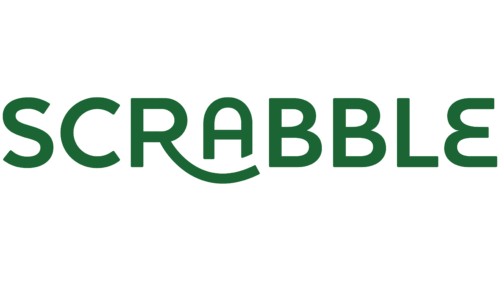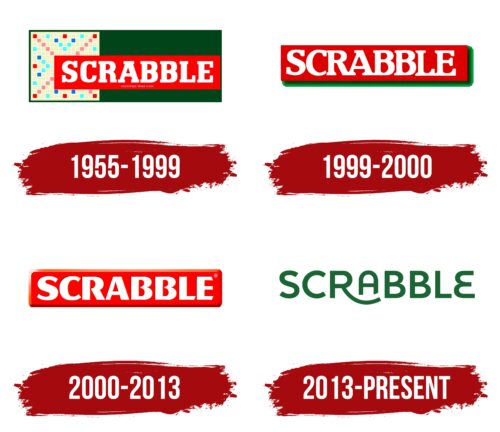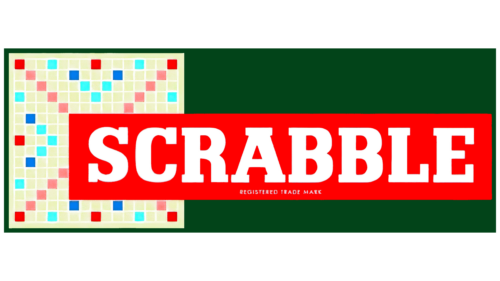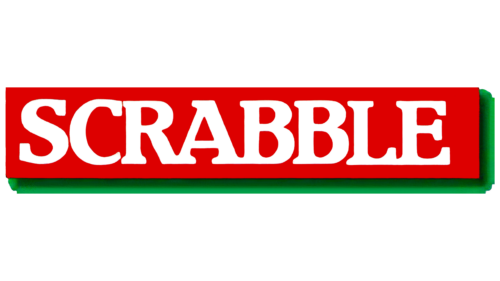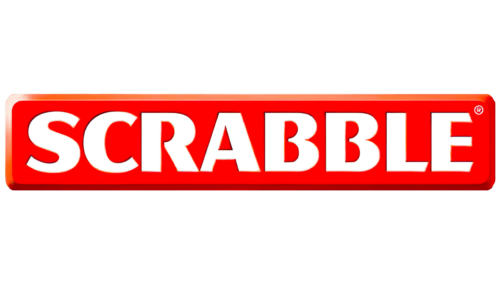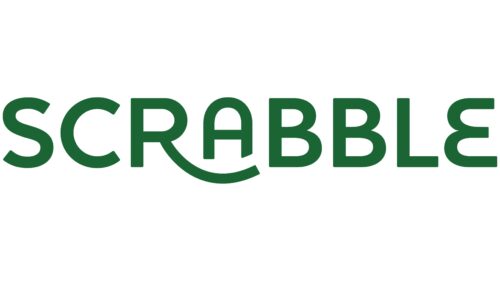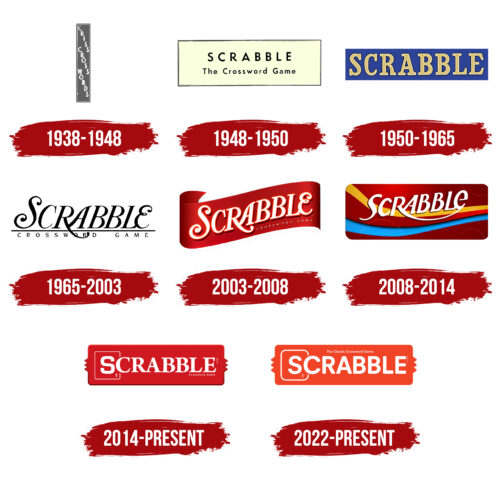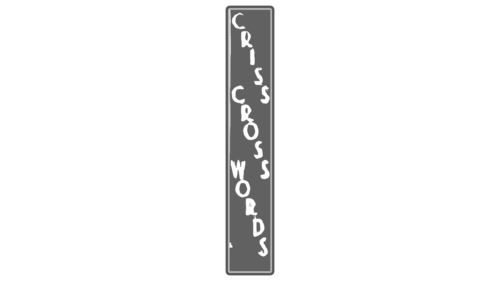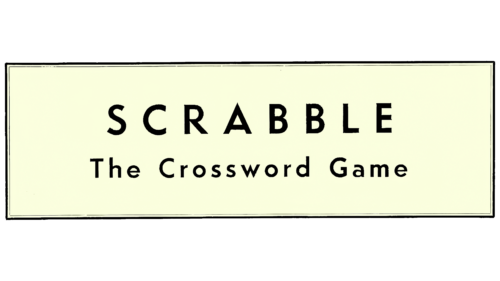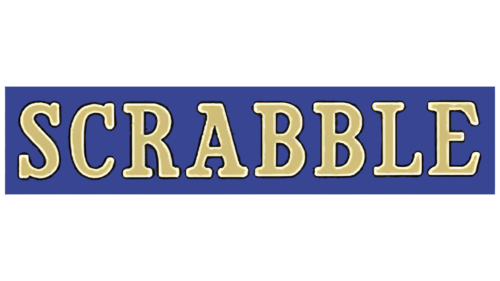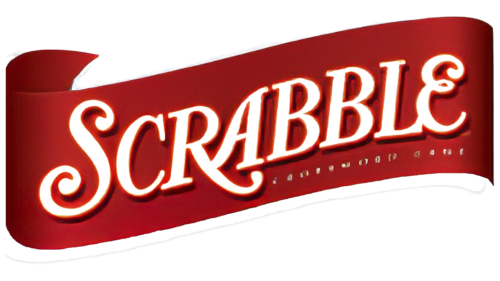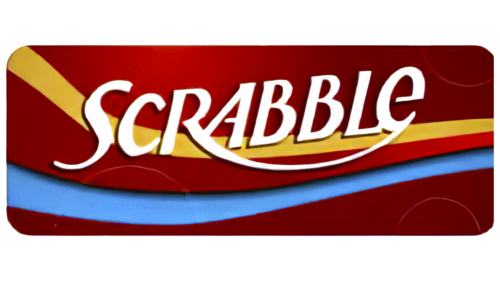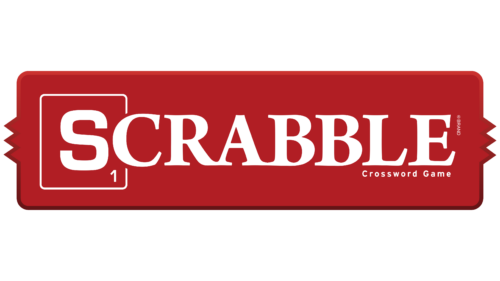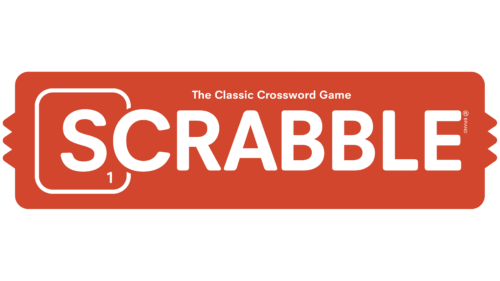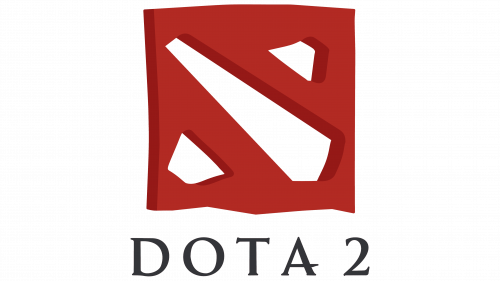The Scrabble logo, true to the essence of the game itself, places a strong emphasis on letters. Its design features a concise and minimalist inscription. The designers have created a custom font specifically for the logo, where only the letters “S,” “C,” “B,” and “L” have a standard appearance resembling Asterisk Sans Pro Bold by Schizotype Fonts. The remaining glyphs possess unique shapes: the letter “A” resembles an inverted “U” with a horizontal crossbar, the letter “E” takes on the form of a sideways “m,” and the letter “R” features an elongated right leg. The logo’s rich, dark green color exudes a calming effect, mirroring the nature of the game itself, which demands attention and concentration.
The Scrabble logo represents the fundamental essence of the game: the power of language and words. The custom font and distinct letterforms exemplify the individuality and diversity inherent in the game of Scrabble. Each letter’s unique shape symbolizes the infinite possibilities and combinations that players can create by strategically arranging letters to form words. The dark green color choice not only evokes a sense of tranquility and focus but also hints at the connection to nature and the natural world, where words are the building blocks of communication and expression.
The Scrabble emblem serves as a visual reminder of the game’s enduring legacy and widespread appeal. Its simplicity and straightforwardness capture the accessibility and universality of Scrabble, a game that transcends language barriers and brings people together through the shared love of words. The logo’s distinctiveness and recognizable letterforms make it instantly identifiable, whether on game boxes, digital platforms, or other branding materials. In essence, the Scrabble logo encapsulates the essence of the game and the joy of linguistic creativity, and the intellectual challenge it offers to players of all ages and backgrounds.
Scrabble: Brand overview
| Founded: | 1938 |
| Founder: | Hasbro (within U.S. and Canada) Mattel (outside U.S. and Canada) |
| Headquarters: | United States |
| Website: | scrabble.com |
Scrabble, a cherished board game, has been bridging people from diverse backgrounds for generations. The brainchild of Alfred Mosher Butts, an architect in the throes of unemployment back in 1938, the game was initially christened “Lexiko.” This timeless masterpiece has remained largely untouched since its birth and continues to serve as a conduit for joyous engagement and friendly rivalry.
In 1948, James Brunot, an avid enthusiast of the game, acquired Scrabble’s rights from its creator, Alfred Butts. Infusing his own creativity into the game, Brunot made minor tweaks, included special squares on the board, and ultimately renamed it to Scrabble. Little did he envision that his cherished game would ascend to become a classic, occupying a prominent place in homes worldwide.
In the 1950s, Scrabble’s charm quickly took hold as an engaging way for American families to strengthen their bonds. Its allure swiftly traversed global boundaries, evolving into a favorite leisure activity for people spanning all age groups. Today, it stands firmly as a cornerstone in global game collections, promising hours of amusement and mirth for kin and comrades alike.
From quaint American hamlets to bustling European metropolises, Scrabble has been warmly embraced in over 120 countries and 29 languages. Each dice toss fuels the competitive spirit of fervent players, intent on fabricating the ideal word to outsmart their adversaries.
Meaning and History
The identity of this game is strongly tied to its educational and entertainment value. Known for enhancing vocabulary and strategic thinking, the game has successfully carved out a unique position in the market as an intellectually stimulating pastime that appeals to a broad demographic.
The brand stands out with its distinctive game board and lettered tiles, visuals that have become iconic over the years. The simple yet elegant design of the game reinforces its identity as an accessible and family-friendly product that encourages learning and interaction.
Furthermore, the brand’s commitment to intellectual development is reflected in its partnerships and sponsored tournaments. These initiatives underscore the game’s competitive edge and appeal to enthusiasts who enjoy testing their word knowledge and strategic thinking skills. Through such endeavors, Scrabble reinforces its brand identity as a game that is not just entertaining but also mentally stimulating.
What is Scrabble?
Scrabble, a beloved word game that combines strategy, vocabulary, and a touch of luck, is often a fixture in households and educational settings worldwide.
Designed to be played by two to four participants, the game was originally conceived to provide an engaging and educational pastime. The premise is straightforward – players earn points by forming words from individual lettered tiles onto a 15×15 square grid. Over the years, the game’s popularity has surged, leading to various editions and digital versions, demonstrating its wide reach and timeless appeal.
1955 – 1999
1999 – 2000
2000 – 2013
2013 – today
Hasbro (North America)
1938 – 1948
1948 – 1950
1950 – 1965
1965 – 2003
2003 – 2008
2008 – 2014
2014 – today
2022 – today
Scrabble color codes
| Cadmium Green | Hex color: | #1a6533 |
|---|---|---|
| RGB: | 26 101 51 | |
| CMYK: | 74 0 50 60 | |
| Pantone: | PMS 356 C |
